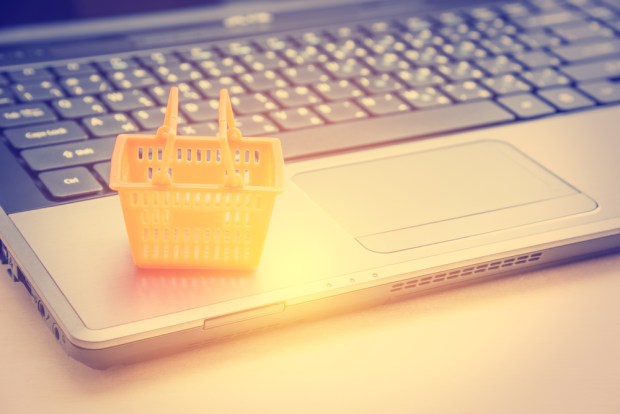B2B eCommerce Differentiates Itself From Its B2C Cousin

An estimated $1.2 trillion worth of sales is expected to pass through B2B eCommerce systems by 2021, according to Forrester research published last June. Analysts are forecasting a rise in B2B buyers seeking products online, with the customer experience the driving factor of growth and success for B2B eCommerce players.
The importance of the customer experience in B2B eCommerce comes as no surprise, considering the role it played in driving B2C commerce companies like Amazon to the top of the global enterprise ranks. It’s also no surprise, then, that B2C giants like Amazon are looking to strengthen their position in the B2B game, acknowledging that $1.2 trillion pot as they look to repeat their successes in consumer shopping.
But B2B eCommerce has some extreme differences from its B2C cousin, explained Karie Daudt, VP of customer experience and marketing at B2B eCommerce software provider Insite Software.
“People aren’t just sitting behind a desk anymore. People are everywhere, and they’re doing their jobs everywhere,” Daudt told PYMNTS. “B2B eCommerce is becoming a hot, hot topic. We see so many companies that have a B2C platform saying they can do B2B – and really, they can’t. B2B is hard.”
The complexities of B2B eCommerce stem from the amount of data and documentation that goes into each deal. Unlike B2C, B2B eCommerce transactions often include price negotiations, extended payment terms, discussions over delivery, the need to integrate purchase data into back-end ERP and accounting systems, and more.
“There is a lot of immaturity in the marketplace, and people don’t know what they don’t know,” Daudt explained, adding that some developers of corporate eCommerce platforms promise a “B2C-like buying experience,” yet don’t necessarily understand how to achieve that. Take personalization, for instance, a keyword that Daudt said is incredibly popular in this industry as platforms attempt to deliver the same kind of personalization and custom shopping experience that consumers see online today.
“But B2B personalization isn’t the same,” the executive noted. “Those big, trendy words don’t mean the same thing. There is so much complexity in B2B.”
Daudt told PYMNTS that even Amazon isn’t immune to the struggles of B2C experts to repeat success in the B2B world.
Amazon Business, the eCommerce giant’s B2B platform, said last year it now has more than one million business customers, and more than 85,000 sellers. Amazon is gradually entering new markets around the globe, most recently launching operations in France.
But Daudt said the Amazon brand won’t guarantee a positive B2B eCommerce experience, particularly for vendors.
“I can tell you, most manufacturers and distributors don’t like Amazon Business,” she said. “They don’t have control. Manufacturers feel like they have to be on Amazon, because if they aren’t, their products will show up there anyway through overstocked inventory.”
Manufacturers cannot gain access to customer data when they sell on Amazon Business, she explained, nor can they control the price. For the buyer, Daudt said the platform can be beneficial and convenient for simple, one-off purchases like office supplies. When volume and scale come into play, the portal may offer an easy buying experience, but it further distances buyers from suppliers. That can be bad for both sides of the transaction, Daudt noted, adding that these issues have popped up in other B2C players that stepped into the B2B world in an attempt to grab a piece of a lucrative opportunity.
And that opportunity appears to only be growing.
Data from Sapio Research, in its “Digital Transformation and B2B eCommerce Report 2017-2018,” found that three-quarters of suppliers have customers who say they like to buy online, with the top benefits for corporate buyers being ease of purchasing, not having to wait for a sales representative and insight into inventory and delivery times.
These factors are also driving differentiators between B2B eCommerce and eProcurement systems, Daudt explained. Similar to B2C commerce players, she said, eProcurement players are also attempting to step into the world of B2B eCommerce.
“Those procurement systems are designed for your internal business, to manage the back-end of your business,” the VP said. “That data is not in any way, shape or form designed to be customer-facing.”
Procurement systems are able to handle data, like manufacturers’ parts with obscure names like “ABC 9-76,” Daudt continued, not to handle “searchable short product descriptions” or the workflows and approval processes of B2B eCommerce.
“ERPs [enterprise resource planning systems] and back-end procurement systems do an amazing job at running the back-side of that information,” she said. “We’ve seen more procurement systems going into eCommerce thinking they’re the same thing, and they’re not.”
Again, she said, eProcurement players are going to run into roadblocks in their transition into B2B eCommerce if they aren’t able to adequately identify and act on the differences between the two areas.
For corporate buyers, Daudt has a key piece of advice as the B2B eCommerce market expands and offers corporate customers a slew of new portals from which to buy for their organizations: “buyer beware.”
“Look under the hood,” she advised. “Buyer, beware of what you’re really getting. I really encourage people to educate themselves and do their research.”
